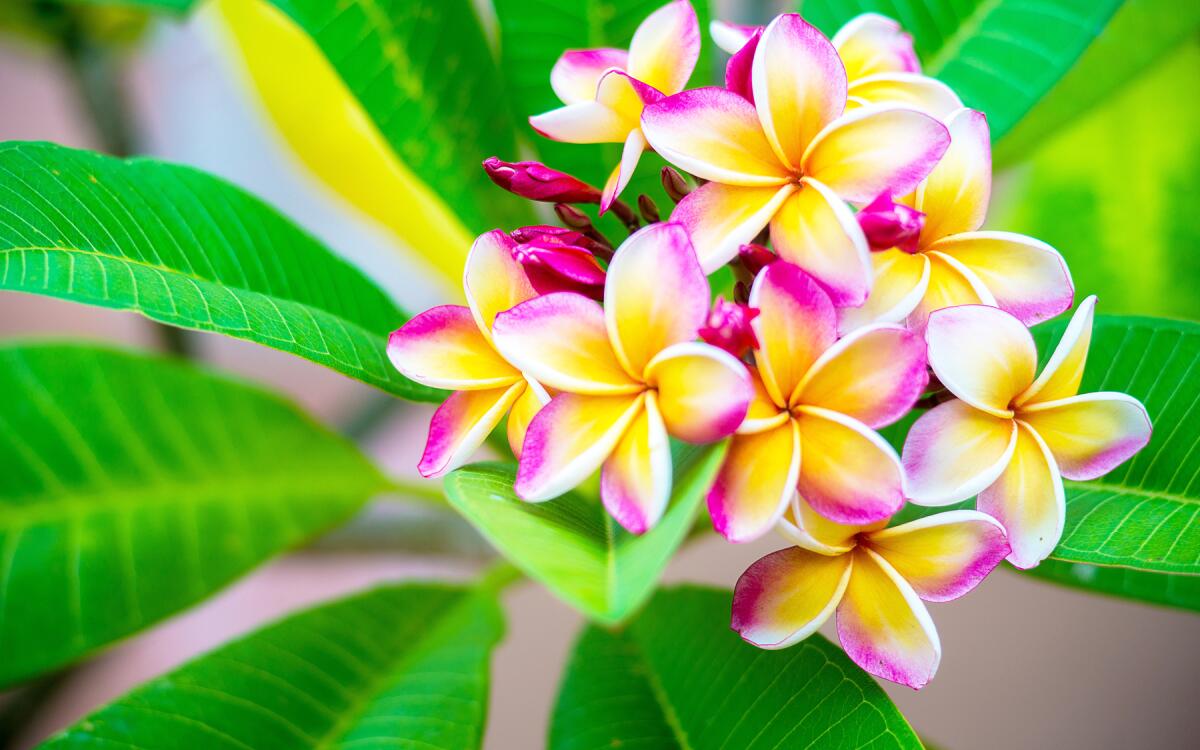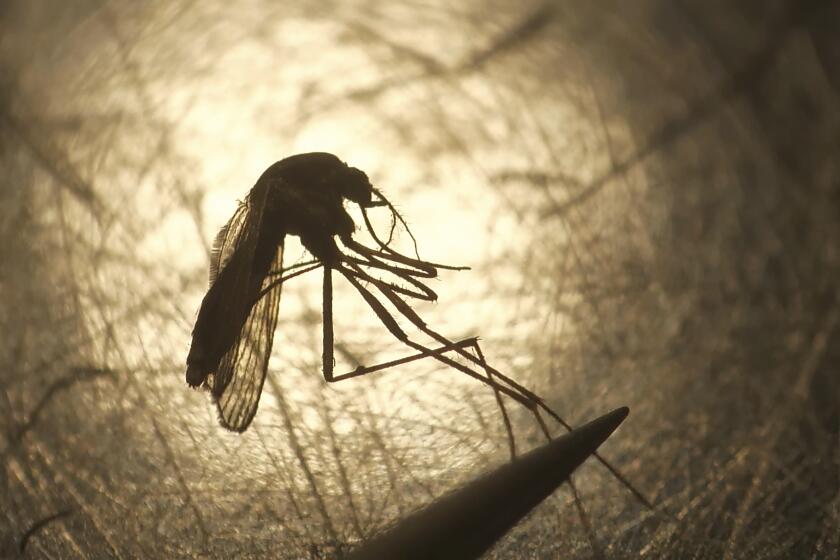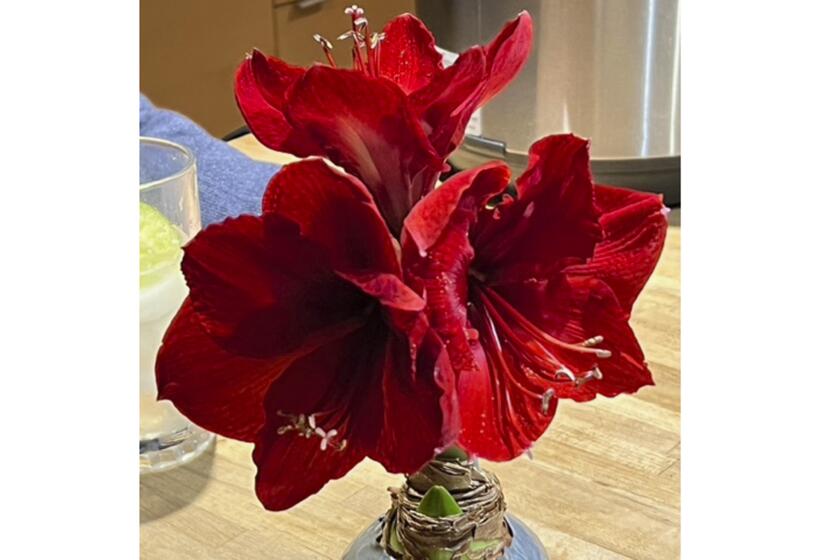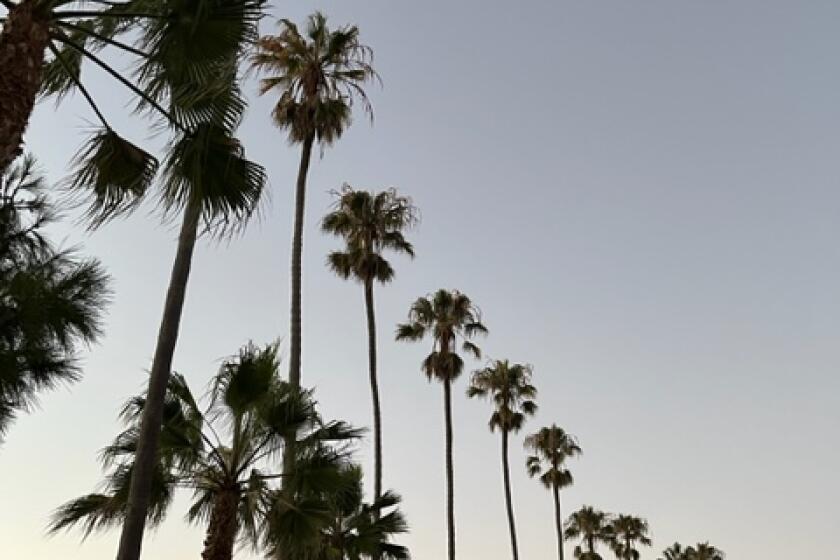Gardening: The exotic plumeria

Plumeria, aka frangipani, is a card-carrying member of the well-known dogbane family, called Apocynaceae, which also includes oleanders and periwinkles.
Plumeria is a shrub or small tree native to the Caribbean plus Central and South America. It is known as the Hawaiian lei flower and is used in making floral necklaces and haku lei (crowns).
When I think of plumerias, I think of the Pacific — Fiji, Hawaii, Samoa, Tahiti, Tonga and Santee (that’s where I got my first one).
They bring back fond memories of luaus, mai-tais, those fire twirling guys and, of course, those grass skirts.
Mine burned.

In the Polynesian culture, the flower is sometimes worn by women over their right ear if seeking a relationship, and over the left if taken. Oftentimes, a guy’s focus will wander far, very far away from gardening. Whatever.
I potted a 14-inch totally bare cutting. Just a plain stem. A stick. No nubs, no leaves, no skivvies, no nothing. Today, it’s almost 6 feet tall.
The genus is named after the French botanist Charles Plumier. Someday, I’ll name a flower after me and call it — ummm, let me think about that one.
The P. rubra species are deciduous, while P. obtusa and other white-flowered types are evergreen.
They are great in containers and don’t get much taller than 6 feet. As landscape plants, plumeria can hit a height and spread of about 20 feet. Some reach 30 feet tall.
Plumeria have widely-spaced, thick branches with thin gray bark and elongated green leaves. The plant sends out a stalk called an inflorescence where the flowers unfurl.
You can grow plumeria from a 12”-inch cutting, but a minimum of 14-inches to 18-inches is better. Before planting, let it sit in a dry spot for two weeks until it forms a callous. Rooting hormone helps the little fella get going.
Stick it in cactus mix or a mixture of sand and premium potting soil. Better living through better dirt.
Plant one leafless cutting per 1-gallon container and, when asked, be ready to explain what that stick-looking thing is. Be imaginative.
Plumerias bloom from May to November. It can take one to three years for cuttings to bloom, and three or more years for plants grown from seed. That’s plenty of time for that dream vacation to Tonga.
You know the drill: plant it in a sunny spot with good drainage. Water deeply when dry. Don’t overwater. Pray.
Fertilize it with phosphorous to encourage flowering.
Some experts fertilize weekly. Some fertilize monthly. That’s a lot food — and money. I don’t want an overweight plumeria, so I fertilize quarterly. My guys are handsome and debonair.
Plumerias have a strong fragrance that intensifies at night to lure its pollinator, the sphinx moth. But it’s all a trap; the flowers don’t even have any nectar. The moths pollinate them inadvertently by transferring pollen in their unsuccessful search for nectar. You’d think that after all these centuries, they would get a clue and find real nectar elsewhere. But noooo!
The most common frangipani is the Plumeria rubra. Rubras come in single and multiple colors.
Rubras have the most fragrant flowers: honeysuckle, gardenia, citrus, coconut or jasmine. Some have a sweet, spicy or rose fragrance. They all smell like Hawaii to me.
When the days begin to shorten, its leaves will turn yellow and drop off. If you break off a yellowing leaf, you will see a milky sap. This is poisonous and can irritate the eyes and skin.
Once the temperatures drop below 50 degrees, bring your plumeria indoors. Or carefully put a blanket over them and sing a lullaby.
Reduce watering in mid-fall as plants start going dormant.
During hibernation (December to March) re-pot, if necessary, into a clean, larger pot.
Plant and water in spring. Space plants 10 to 20 feet apart, depending on the expected size of the plant.
Plumerias are harassed by mealybugs, spiders, moth larvae and whiteflies. Fight them with an insecticidal soap. Spread food grade — not swimming pool — diatomaceous earth around the plant to treat slugs and snails.
If you see a small hole on the stalk with black yuck oozing out, it’s the long-horned beetle (stem borer). Cut off and trash the infected parts.
I rarely prune mine. Plus, pruning can reduce flowering.
Here are some ideas: Edith’s White (white), Herzog’s Autumn Sunrise (red), Jeannie Morange (bi-color), JJ Daydream (rainbow), Kimo (salmon orange), Pop Art (bi-color), Thornton’s Lemon Drop (yellow) and Veracruz Rose Rainbow (yellow and pink flowers).
Yellow plumerias last the longest and have the strongest fragrance. White plumerias have a delicate scent, but the shortest lifespan.
And that grass skirt incident was not an accident.
Schmidt is a Poway resident with over 40 years of gardening experience.
Get the Pomerado News in your inbox weekly
Top headlines from Poway, Rancho Bernardo and 4S Ranch, every Thursday for free.
You may occasionally receive promotional content from the Pomerado News.





